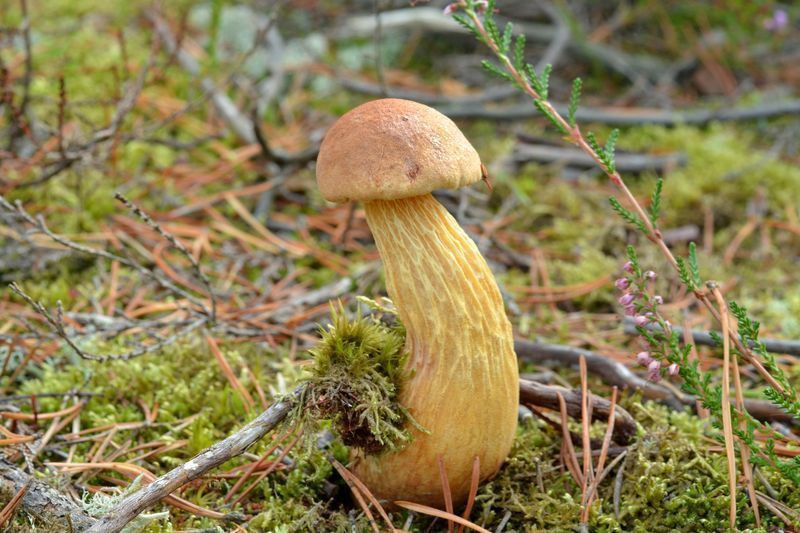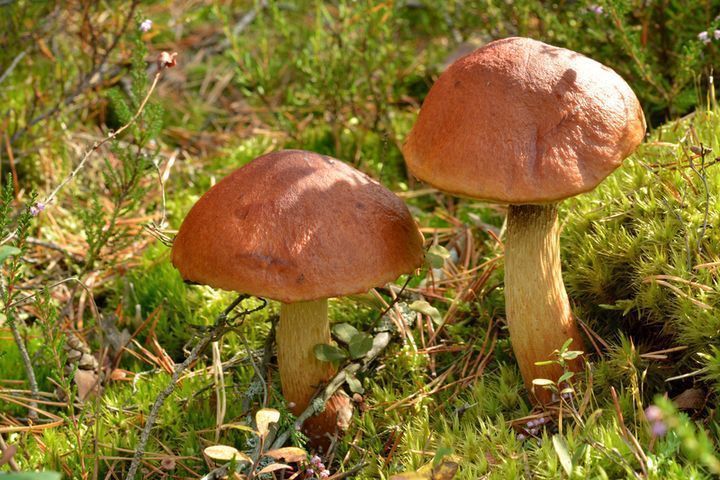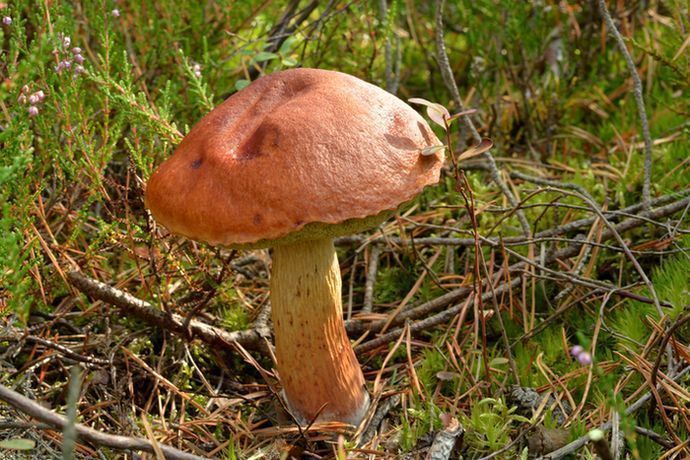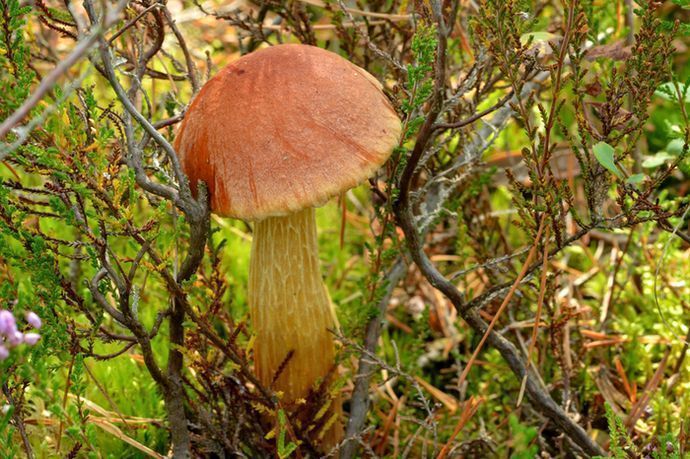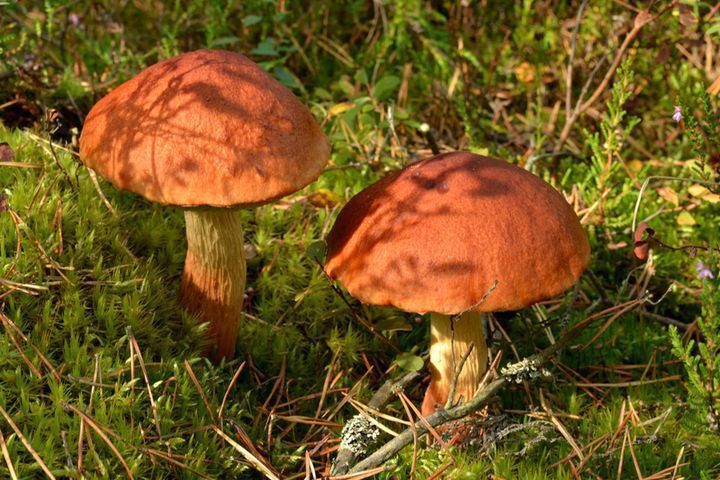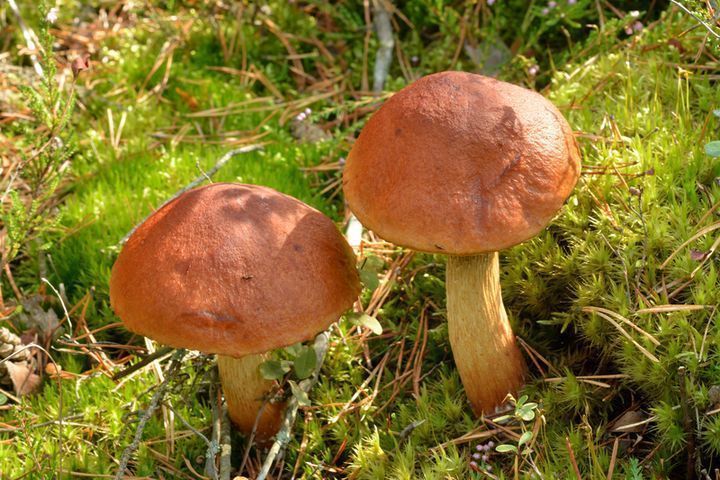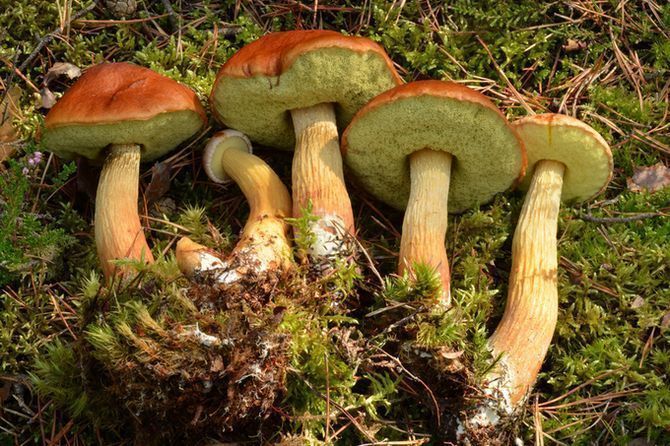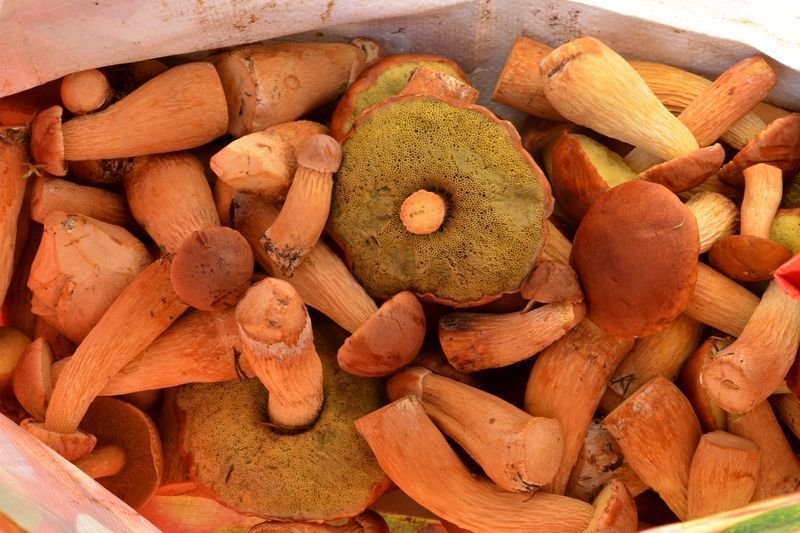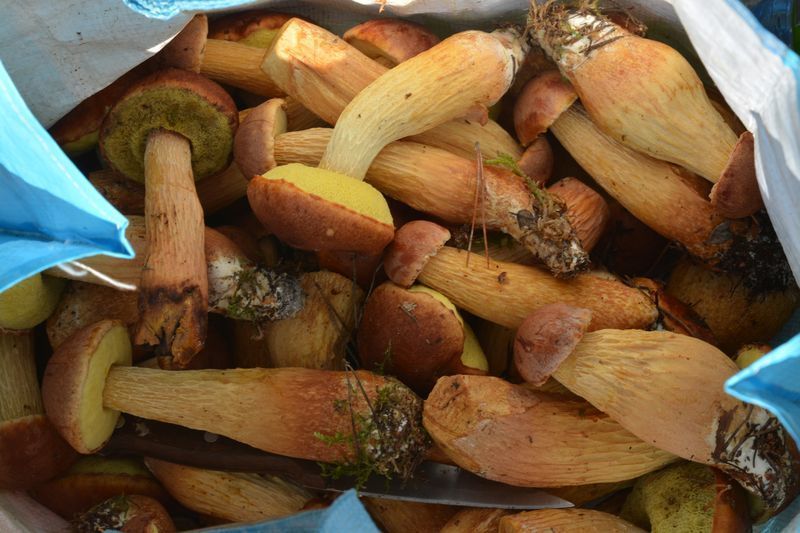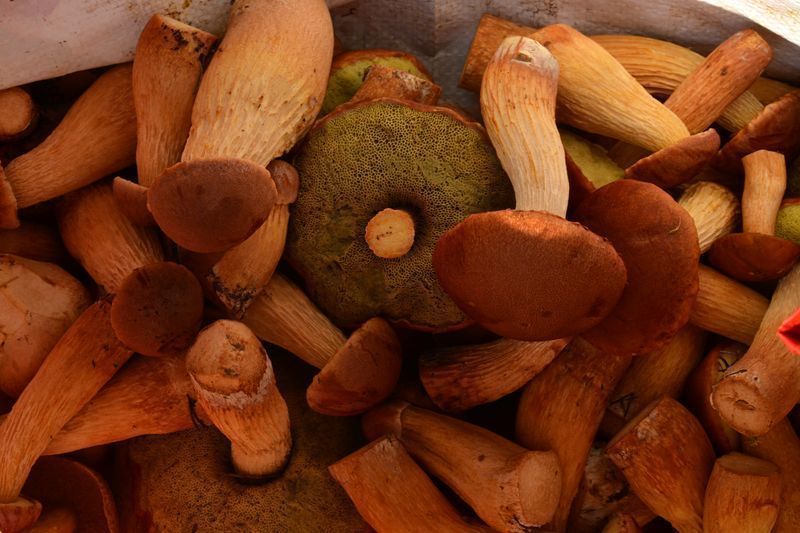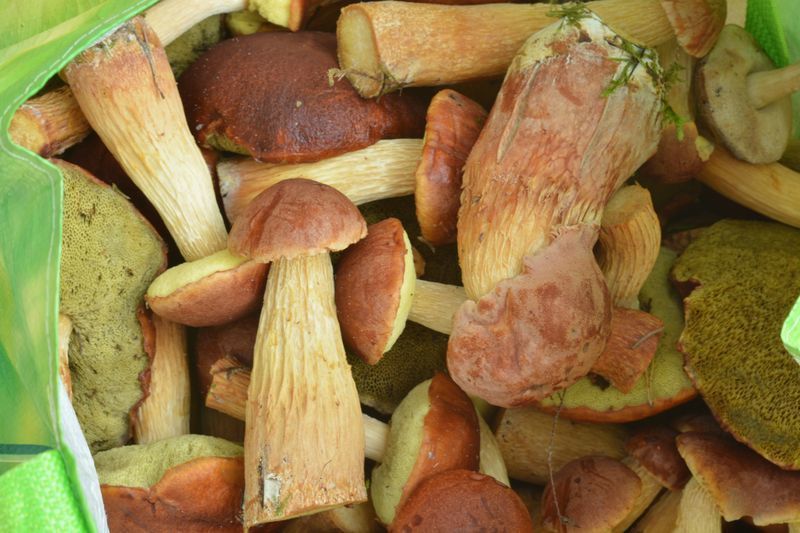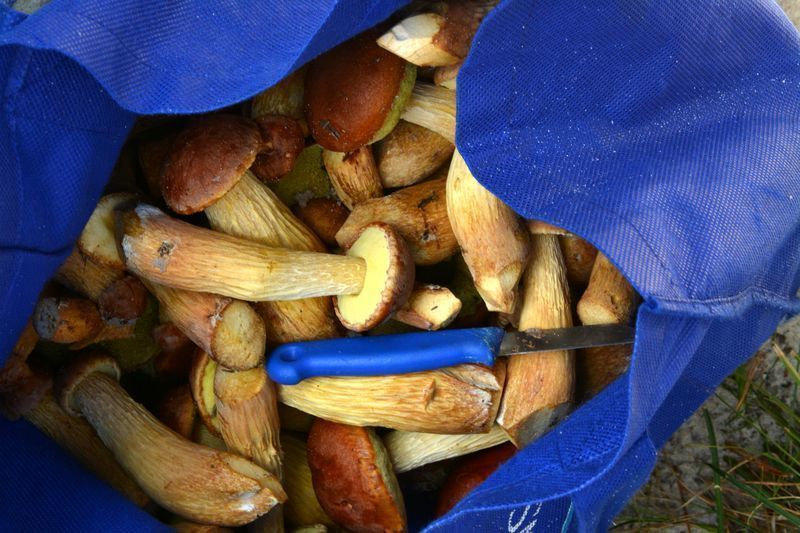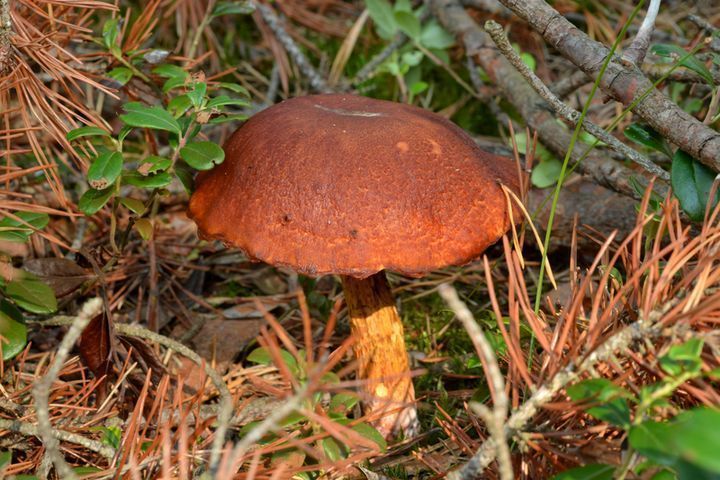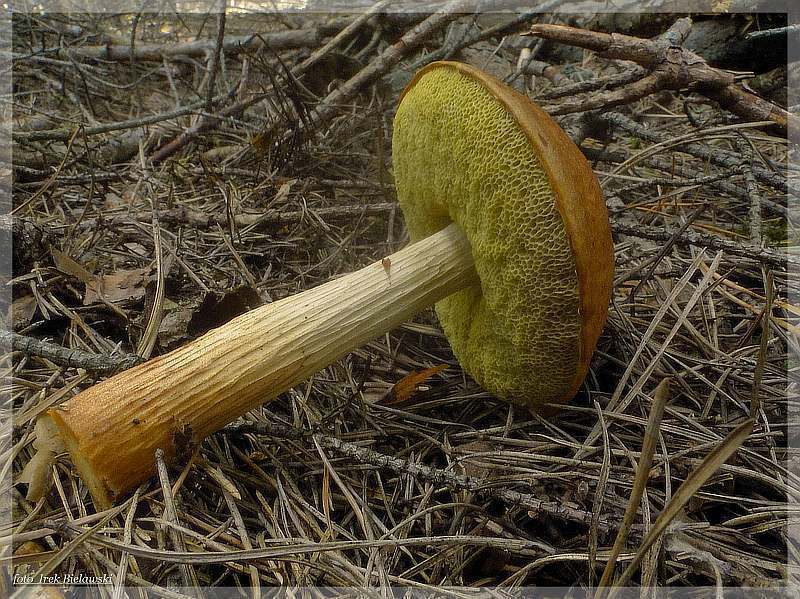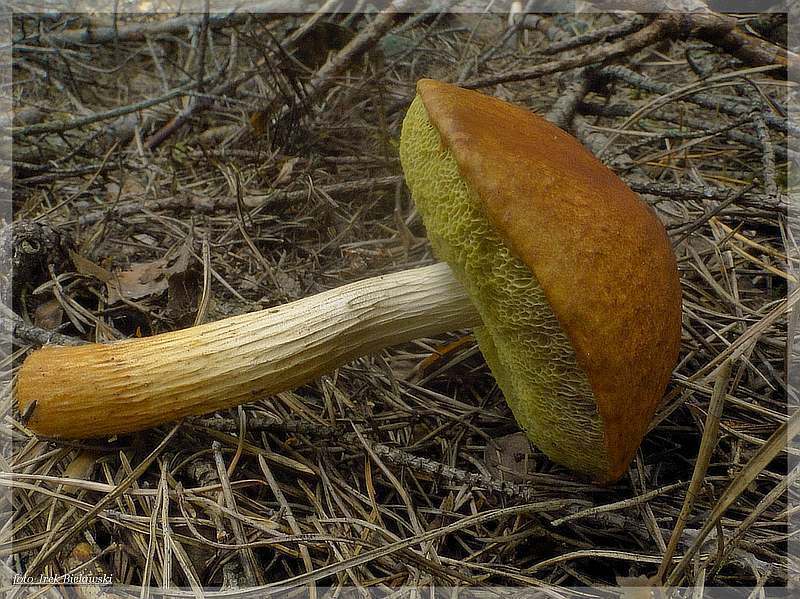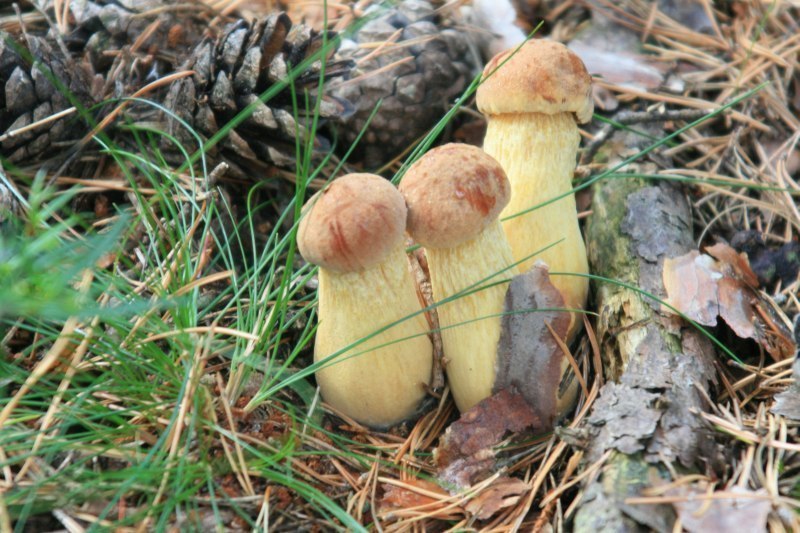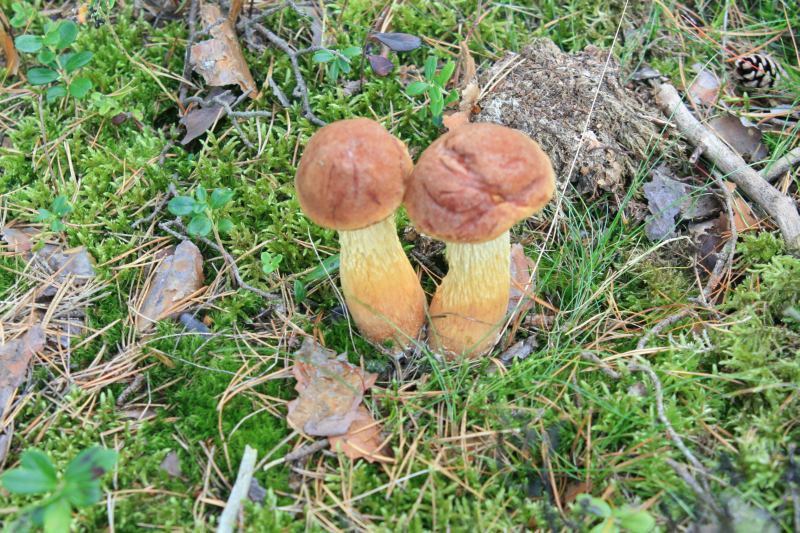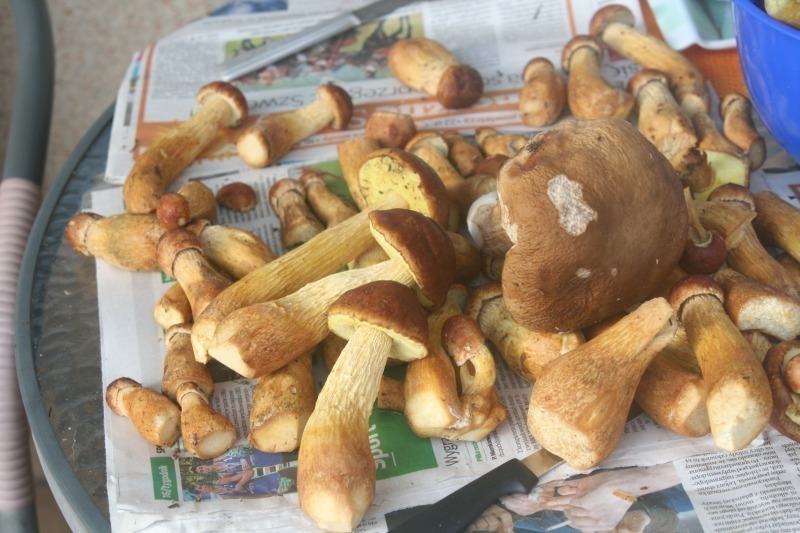Po pierwsze powielajmy i propagujmy całkiem przyjemną polską nazwę gatunkową borowik wrzosowy, niech lud też ma "coś od życia" ;-)
ale chyba pod warunkiem, że będzie więcej potwierdzonych danych (z Polski), że te wrzosy są zdecydowanie preferowane???
Po drugie, ma ktoś jakieś namiary i może ew. bardziej szczegółowo streścić jego siedliskowe preferencje "we własnym domu" czy Ameryce Północnej oraz Azji Południowo-Wschodniej (Tajwan), ale też na Litwie i Łotwie?
Z tego co potrafiłem zrozumieć, to jest podawany jako mikoryzujący z sosną (Pinus sp.),
ale wzmianek o wrzosach nie umiałem znaleźć ? Po trzecie, ja naprędce znalazłem tyle:
Mycologia". Vol. 53" 1961
http://www.cybertruffle.org.uk/cyberliber/59350/0053/003/0234.htm http://en.wikipedia.org/wiki/Boletus_projectellus Boletus projectellus
From Wikipedia, the free encyclopedia
Taxonomy
The species was first described by American mycologist William Alphonso Murrill in 1938 as Ceriomyces projectellus, from collections made in Lynchburg, Virginia.[2] Rolf Singer transferred the species to the genus Boletellus in 1945.[3]
Description
The cap is initially convex before flattening out in maturity, and attains a diameter of 4–20 cm (1.6–7.9 in). The cap surface is dry, initially with a velvety so slightly hairy texture but developing small cracks in age. The color in young specimens is pale to dark cinnamon-brown to dull reddish or dark reddish-brown, sometimes tinged with gray or olive-green, particularly in younger individuals. The flesh is whitish (sometimes with rosy tints), has no distinctive odor, and an acidic taste. Unlike many bolete species, it does not turn blue when cut or injured, but it does slowly turn yellow-brown. The pore surface on the underside of the cap is initially yellow before turning brownish-olive in maturity, and the circular pores are about 0.5–2 mm wide. The tubes comprising the hymenophore are 1–2.5 cm (0.4–1.0 in) deep. The stem is 9–24 cm (3.5–9.4 in) long by 1–5 cm (0.4–2.0 in) thick, and either equal in width through, or larger at the base. It is solid (i.e., not hollow), dry, and more or less the same color as the cap, or lighter. Its surface has a prominent reticulum (network-like surface), especially on the upper two-thirds; near the base, there is a white tomentum. The base of the stem turns sticky in wet weather.[4]
Boletus projectellus produces an olive-brown spore print. The spores are oval to spindle-shaped, smooth, and measure 18–33 by 7.5–12 um; these are the largest spores of any bolete species in North America.[4] Fruit bodies are edible. They can be used in mushroom dyeing to produce a variety of colors (yellow, brownish orange, dark orange, greenish brown or greenish yellow), depending on the mordant used.[5]
Habitat and distribution
The fruit bodies of Boletus projectellus grow singly, scattered, or in groups on the ground in a mycorrhizal association with pine trees. In North America, its range includes eastern Canada (New Brunswick) south to North Carolina and west to Michigan.[4][6] It has also been recorded in Mexico.[4] In 2011, it was reported for the first time in Europe, from Lithuania (Curonian Spit); the identification of the species was confirmed by comparing DNA sequences with authentic North American collections.[7] In 2013, it was also reported from Latvia, where it has been declared "fungus of the year 2014".
References
1. "Boletus projectellus (Murrill) Murrill 1938". MycoBank. International Mycological Association. Retrieved 2012-10-10.
2. Murrill WA. (1938). "New boletes". Mycologia 30 (2): 520–5. doi:10.2307/3754346.
3. Singer R. (1945). "The Boletineae of Florida with notes on extralimital species. I. The Strobilomycetaceae". Farlowia (2 ed.) 2: 129.
4. Bessette AE, Roody WC, Bessette AR. (2000). North American Boletes. Syracuse, New York: Syracuse University Press. p. 139. ISBN 978-0-8156-0588-1.
5. Bessette A, Bessette AR. (2001). The Rainbow Beneath my Feet: a Mushroom Dyer's Field Guide. Syracuse, New York: Syracuse University Press. pp. 40–1. ISBN 0-8156-0680-X.
6. Snell W, Dick EA. (1970). The Boleti of Northeastern North America. Lehre, Germany: J. Cramer. p. 11. ISBN 978-0-85486-016-6.
7. Motiejunaite J, Kasparavicius J, Kacergius A. (2011). "Boletellus projectellus – an alien mycorrhizal bolete new to Europe". Sydowia 63 (2): 203–13.
External links
Boletus projectellus in Index Fungorum.
Fungus of the Year, Latvian Mycological Society Na Łotwie wzdłuż brzegu morza, do 25 km w głąb lądu, wymienia się tylko sosny
http://miko.ldm.gov.lv/YR%27s_FUNGUS.htm Boletus projectellus (Murrill) Murrill has been found in Latvia for the first time as recently as in 2013. Several specimens, collected by non-mycologists at various locations along the seashore, were brought to Natural History Museum's annual mushroom exhibition in September. Thus Latvia apparently has become the second European country (after Lithuania) to be invaded by that North-American species.
Latest news (Sep 13, 2014). Since late August 2014, numerous specimens from locations along the entire Latvia's seashore (plus one location ~25 km inland) have been either brought to Natural History Museum or reported photographically to the Museum, Latvian Mycological Society or senes.lv website. [More details will be provided on our website in the 3rd decade of September]. W
http://www.mushroomexpert.com/boletus_projectellus.html też mamy tylko o sosnach
W szczegółowym opracowaniu podanym przez Basię:
http://81.10.184.26:9001/personen_add/myco/Sydowia_63_0203-0213.pdf chyba prawie wszystkie znaleziska podawane są z mchów!!!
